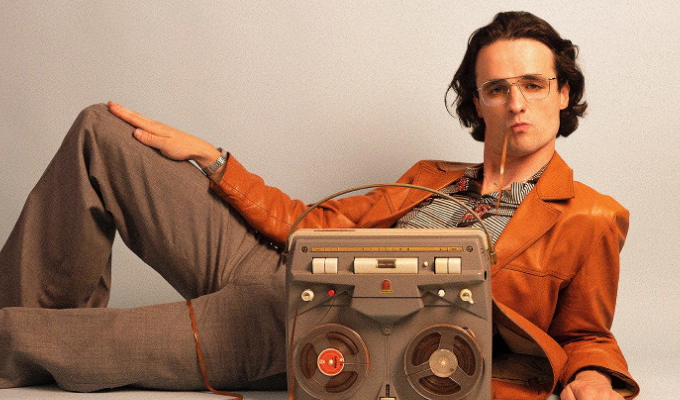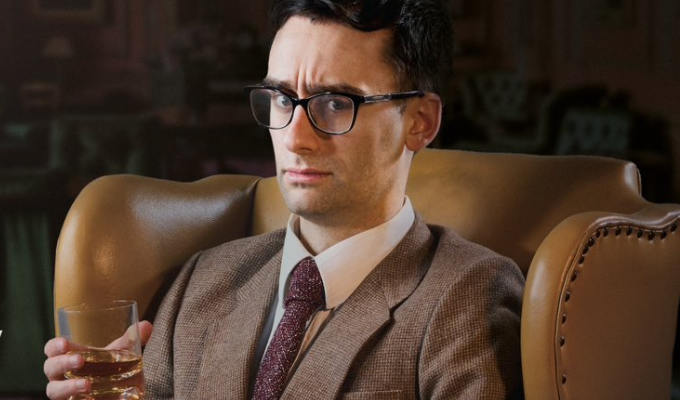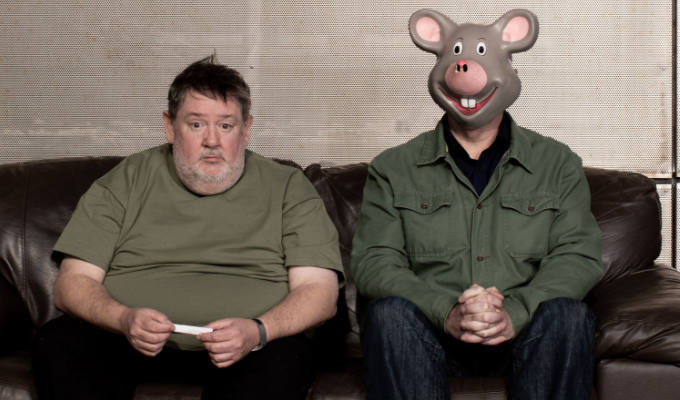The unfunny side of stand-up
Sarah Slack reviews the new documentary Alone Up There
‘Stand-up comedy is the most difficult art form of them all’, according to filmmaker Sean Patrick Shaul. His new documentary, Alone Up There, aims to profile those who dedicate their lives to it; and reveal the gritty reality of the American comedy circuit.
The majority of those interviewed are not big names, so the 85-minute film hows what it’s like to be an ordinary on-the-road comedian, involving heckles, poverty – and a lot of vomiting. Shaul obviously has an empathy for those who have chosen this life, and feels their experiences are more fascinating that the glittering arena tours and TV appearances, which he – or rather the comedians he spoke to - depicts as all smoke and mirrors.
The film, released as a digital download, starts with a brief look into the beginnings of stand-up in North America, where it was developed as a form of cheap entertainment for a population with increased disposable income and leisure time after the Civil War ended in 1865.
The next boom was in the Fifties, where comedians commonly performed on variety shows, and harmless ‘two men walk into a bar’ style jokes were the norm. As the Fifties became the Sixties, the advent of topical jokes from Mort Sahl and controversial material from Lenny Bruce led to a paradigm shift from the bland to the courageous, opening the door for outspoken comedians such as Richard Pryor and George Carlin to front a comedy boom in the Seventies.
This introductory section, whilst interesting, seems forced and basic to the comedy fan, as if Shaul did not know how to start the film. An examination of how the popularity of comedy on television affected touring comedians would have been more relevant, given the wider themes of the film.
The documentary soon moves on to asking comedians what character traits they think a stand-up needs. Frequent adjectives include ‘antisocial’, ‘insecure’, and ‘mentally ill’. The comedians interviewed don’t seem to be the the sort of people you would want to hang out with, either. They are a mixed bunch of angry and desperate comics, who either only perform comedy because that’s all they’re able to do – while others, who have clearly have a passion about stand-up, endlessly complain.
If the aim was to make the audience sympathetic to what comedians have to go through, it’s a funny way of doing it...
 The tone is not all negative, though, with Carlin’s daughter Kelly noting that courage is a huge aspect of a comedian’s character, a trait she saw prominently within her late father. Shaul also concludes that, compared to all other art forms, stand-up allows for true freedom of expression as there are no ground rules.
The tone is not all negative, though, with Carlin’s daughter Kelly noting that courage is a huge aspect of a comedian’s character, a trait she saw prominently within her late father. Shaul also concludes that, compared to all other art forms, stand-up allows for true freedom of expression as there are no ground rules.
Most noticeably, Alone Up There demonstrates the direct risks associated with stand-up, with most comedians remembering at least one time when they were either heckled aggressively or attacked on stage.
With certain comedians, interruptions cut the deepest, with John Heffron recalling one experience: ‘He [The heckler] probably doesn’t remember seeing me. I’ve carried this hate for this douchebag all these years and he probably doesn’t even remember.’
Stories are told of nightmare gigs with no lights or microphone, and where audiences leave comedians in tears after turning into ‘hate rallies’. For Darren Frost his nightmare gig could have led to a serious injury, when an audience member threw a scotch glass at the stage which hit him in the chest, demonstrating a comedian must possess a thick skin – literally.
We also hear how comedians also unwillingly sacrifice their social lives and personal relationships... all for a job that is pitifully rewarded. Many gigs in North America pay just $25 for the night, so the willingness to starve is seen as a true sign of a potential comedian. For many, covering the food and petrol to perform in a remote destination is all the pay they can hope for.
Alone Up There also details what the three key components of comedy are believed to be: confidence, timing and delivery. The attitude a comedian possesses is stressed as a major part of selling the joke, where positivity and professionalism are needed to take control of the room.
The comedians interviewed also emphasise the importance of facial expressions and body language, and that often their attitude draws more laughs than the material itself. Nevertheless, material is still stressed as crucial, with Marke Driesschen likening a comedian without material, expecting only to ad-lib, to a soldier going into battle without ammunition.
Some of the comics’ complaints are specific to North America... and the overwhelming majority of Shaul’s interviewees have hardly made it, so their tips might not necessarily be stepping stones to success. As Alonzo Bodden jokes as he’s filmed outside: ‘You don’t see Eddie Murphy being interviewed in a park do you?’
By the end of the documentary, Shaul realises that it’s all very well asking comedians what stand-up means to them, but the only way to truly understand it is to perform a routine himself.
He’s initially reluctant due to the pity his announcement prompts in the comedians, but it becomes comforting for Shaul to know that so many of the comics he interviewed have experienced stage fright to the point of vomiting. Eddie Pepitone believes stand-up at its very core is about facing fear.
Without listing the exact details of Shaul’s first stand-up gig, it obviously goes badly, and makes for painful watching.
While it lacks in big name comedians, Alone Up There highlights the reality of what it is like to be a comedian, and by highlighting the dark side of the industry, bringing to attention how much comics put on the line for just a 15-20 minute set.
As Shand states after his performance at a local comedy club: ‘I can’t imagine doing this professionally, and all the time’, which captures the entire point of this documentary, appreciating what comics go through to do their job through examining how they deal with the unknown everyday.’
- Alone Up There is available as a download now, for $7 (about £4.40) from thestandupcomedians.com.
Published: 9 Oct 2012






